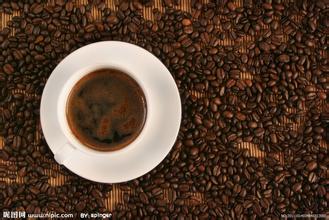Introduction to the use of coffee press, preservation and brewing skills
Introduction to the use of coffee press, preservation and brewing skills
Single or two heating systems
A fully automatic coffee machine usually takes 43 seconds to heat from the brewing temperature to the steam temperature, while two heating systems can actually eliminate the waiting time. Full-automatic general use of thermal resistance plate heating unit. When heating from punching temperature to steam temperature, a small amount of water passes through the heating plate, so it takes time in the conversion. The double heating system can make milk foam with steam while brewing coffee, and there is no need to pour the boiler to cool down (to the brewing temperature) after using the steam. Digital display VS indicator
If you don't like flashing lights, the digital display function is designed for you. The digital display will tell you what the machine is ready to do, what is being done, or what needs to be done. Like a combination indicator, the message will tell you when you are out of beans or need to add water. An indicator light may indicate more than one error message, and the digital display will tell you a special error message. For some machines, the digital display will tell you how much coffee is being made, the choice of program settings, and even the total number of cups of coffee made since its inception. Program setting
Many automatic coffee machines have program setting function, but different models have different program setting function and form. Here we list some of the functions that are usually available for program settings.
Cup quantity control
Each automatic coffee machine can adjust the amount of coffee released, but not all machines can be controlled by program. With this function, you can set each coffee button so that it can release a certain amount of coffee. Some machines can also set the amount of hot water released. Function of pre-grinding powder
This function can speed up the time it takes you to make coffee. After making a cup of coffee, the bean grinder has begun to grind the coffee powder needed for the next cup and fill it into the making assembly to wait for the next cup to be made. When you press the key to make the next cup, you don't have to wait for the bean grinding process, the coffee machine starts to brew immediately. The disadvantage of this function is that the ground coffee powder will lose its freshness if it is placed for too long. Prefabricated function
When you enable this function, the coffee powder is soaked in a small amount of water and wait about 1 second before the official production begins. This function enables coffee powder to be better extracted. The prefabricated function can also be placed for uneven punching. When using this function, you will find that after the grinding process, a few drops of coffee drip out, and after a pause, the coffee brewing begins. Temperature control
The outlet temperature for making Espresso is usually set at about 85 ℃. When it reaches your coffee cup, the temperature drops to about 74 ℃. Preheating your coffee cup (or Espresso cup) can reduce cooling. But if you are not satisfied, you can set the coffee temperature yourself. In most coffee machines, when the temperature is set to "high", the coffee outlet temperature is about 77 ℃. As you can see from the above figures, the temperature of Espresso is much lower than that of drip coffee. Drip coffee is usually made at temperatures ranging from 90 ℃ to 96 ℃. Regulation of coffee bean dosage
The amount of coffee beans used in each production can be adjusted, so that you can adjust the concentration of coffee according to different amount of water and different taste. The coffee machine with removable assembly can adjust the amount of beans in the range of 6-9 grams. Non-unloading production component coffee machine, according to the machine, the adjustment range is 5-16 grams. High dosage allows you to make a cup of Double Espresso at the touch of a button.
Removable and non-removable manufacturing components
The production component is a part of coffee brewing. The advantage of removable manufacturing components is that you can remove them for inspection and cleaning. You can remove it very easily without any tools. Production components can often be removed to rinse and clean coffee residue powder and coffee oil. On the other hand, the machine with non-detachable components does not need to be cleaned manually and will be washed automatically when it is turned on and off. Coffee cup preheating plate
The automatic coffee machine usually has a coffee cup preheating plate, but it is not standard. Serving coffee in a cold cup is bound to damage the taste of the coffee, and the preheated cup will only make you more satisfied with your coffee. Most hot cups are active and have independent heating systems. And the passive preheating plate is the use of coffee preheating, so the effect is slow. Adjustment of the thickness of ground bean powder
Most fully automatic coffee machines allow you to adjust the bean grinder. If your coffee taste is too weak or too strong (bitter), you can adjust the setting of the bean grinder. Finer ground beans can make coffee stronger, but too fine can make coffee bitter or slow coffee outflow. On the contrary, thicker ground beans will make the coffee lighter, lacking that kind of exhilarating feeling.

Important Notice :
前街咖啡 FrontStreet Coffee has moved to new addredd:
FrontStreet Coffee Address: 315,Donghua East Road,GuangZhou
Tel:020 38364473
- Prev

Description of taste and flavor of honey-treated coffee beans by sun washing
Honey treated coffee beans sun washing method to distinguish taste and flavor description after washing, the coffee beans are still wrapped in the pericarp with a moisture content of 50% and must be dried to reduce the moisture content to 12%, otherwise they will continue to be mellow, moldy and rotten. The better treatment is to use sunlight to dry, although it will take 1-3 weeks, but the flavor is very good and very popular.
- Next

Description of Brazilian Coffee Flavor introduction to the Grinding scale of the treatment method in the Manor area
Brazilian coffee flavor description taste manor regional treatment grinding scale introduction Brazilian coffee was introduced from French Guiana in 1729. It is true that intensive farming, changing treatment methods and improving the technical content of planting can improve the quality of coffee to a certain extent, but the natural conditions of Brazil cannot be compared with those of some regions that produce top coffee in the world, because although
Related
- What brand of black coffee is the most authentic and delicious? what are the characteristics of the flavor of the authentic Rose Summer Black Coffee?
- Introduction to the principle and characteristics of the correct use of mocha pot A detailed course of mocha pot brewing coffee is described in five steps.
- Which is better, decaf or regular coffee? how is decaf made?
- How much is a bag of four cat coffee?
- How about four Cat Coffee or Nestle Coffee? why is it a cheap scam?
- Which is better, Yunnan four Cats Coffee or Nestle Coffee? How about cat coffee? is it a fake scam? why is it so cheap?
- How about Cat Coffee? what grade is a hoax? which instant coffee tastes better, four Cat Coffee, Nestle Coffee or G7 coffee?
- Process flow chart of coffee making-Starbucks coffee making process what coffee tastes good at Starbucks
- The top ten best coffee beans in the world Rose summer coffee or Tanzanian coffee tastes good
- Yunnan four cat coffee is good to drink?_four cat coffee is a big brand? four cat blue mountain coffee is fake?

